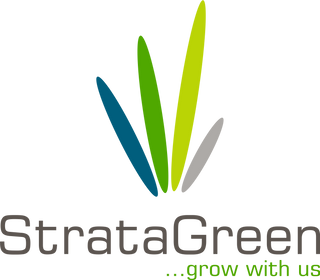
Apical buds compared as part of a trial, with TerraCottem-treated trees on the right and untreated on the left.
An hour’s drive north of Auckland at Weiti Bay, a housing development is going in. Previously a forest plantation, it will soon be a community beside the sea, set in amongst some seriously chunky green spaces. And since 75% of the total area is to remain as greenspace, planting will take place at a landscape scale. Hence the relevance of this trial being carried out by Greenscene NZ. Check it out – it shows exactly how adding TerraCottem to the mix makes a difference.
The site: is an exposed coastal site, south-facing, on clay soils, with a low pH (4.7). Previously land use was forestry, with recent extensive re-contouring for residential land development.
The trial: in August 2017, twenty bare-root Caucasian Alder (Alnus subcordata) were planted in adjacent plots; 10 control plants and 10 subject to treatment with TerraCottem Universal. Using a spade as a guide, each hole measured approximately eight litres. TerraCottem was applied to 10 trees at a rate of 4g/L, measured using digital scales. Mixing occurred within the planting hole. To avoid predation, 500mm plastic triangular tree guards were installed at planting. Tree height and samples of treated and untreated soils were collected for analysis. No additional treatments or watering occurred throughout the growing period.
The results: both qualitative and quantitative assessment was undertaken of soil and tree growth in August 2017 and then again in May 2018. Soil analysis of samples showed an immediate improvement in the treated soil across the range of characteristics assessed. Apical bud length and retention of the first five buds of the ten TerraCottem-treated trees was found to be significantly greater than control trees. Average growth height was similarly greater for the treated trees (310.3mm) than control trees (159.6mm). And in terms of vitality – which was measured by branching, crown porosity, leaf size and retention – this was noticeably better in TerraCottem treated trees in contrast to control trees which typically presented with reduced leaf size, retention, premature annual bud release, stem and branch retrenchment*.
The summary: the ten trees benefitting from TerraCottem’s buffering have grown in healthier living soil, and they’ve grown well and had more vitality. Hopefully more of the project’s planting will benefit from TerraCottem given the site’s tricky coastal exposure, altered soil profiles and nutrient depletion thanks to past years as a pine plantation.
To see the original report:Click Here
* where the crown of a declining tree retains its overall form but reduces its active canopy by progressively shedding small branches developing a lower crown.
